Amana NGD4600Y, NED4600Y, NGD4655E, NGD4700Y, NGD4705E User Guide
...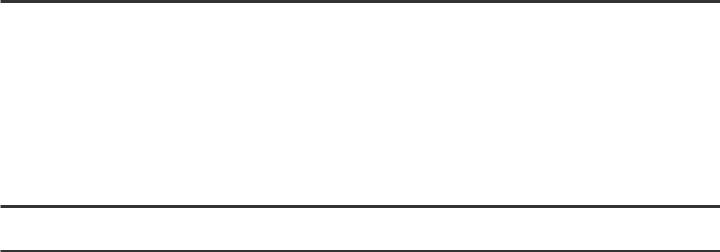
Electronic Dryer |
Sécheuse électronique |
Use and Care Guide |
Guide d’utilisation |
|
et d’entretien |
Table of Contents |
|
|
Table des matières |
|
|
DRYER SAFETY.......................................................................... |
|
2 |
SÉCURITÉ DE LA SÉCHEUSE................................................. |
|
13 |
CHECK YOUR VENT SYSTEM FOR GOOD AIR FLOW |
........... 4 |
VÉRIFICATION D’UNE CIRCULATION D’AIR |
|
||
CONTROL PANEL & FEATURES............................................... |
|
5 |
ADÉQUATE POUR LE SYSTÈME D’ÉVACUATION ................ |
15 |
|
CYCLE GUIDE............................................................................. |
|
6 |
TABLEAU DE COMMANDE ET CARACTÉRISTIQUES.......... |
16 |
|
USING YOUR DRYER................................................................. |
|
7 |
GUIDE DE PROGRAMMES...................................................... |
|
17 |
DRYER CARE.............................................................................. |
|
8 |
UTILISATION DE LA SÉCHEUSE............................................. |
|
18 |
TROUBLESHOOTING............................................................... |
|
10 |
ENTRETIEN DE LA SÉCHEUSE............................................... |
|
19 |
WARRANTY.............................................................................. |
|
12 |
DÉPANNAGE............................................................................. |
|
21 |
ASSISTANCE OR SERVICE................................... |
BACK COVER |
GARANTIE................................................................................. |
|
23 |
|
|
|
|
ASSISTANCE OU SERVICE............... |
COUVERTURE ARRIÈRE |
|
Para una versión de estas instrucciones en español, consulte la página de “Ayuda o servicio técnico”.
W10096991B W10096993B - SP
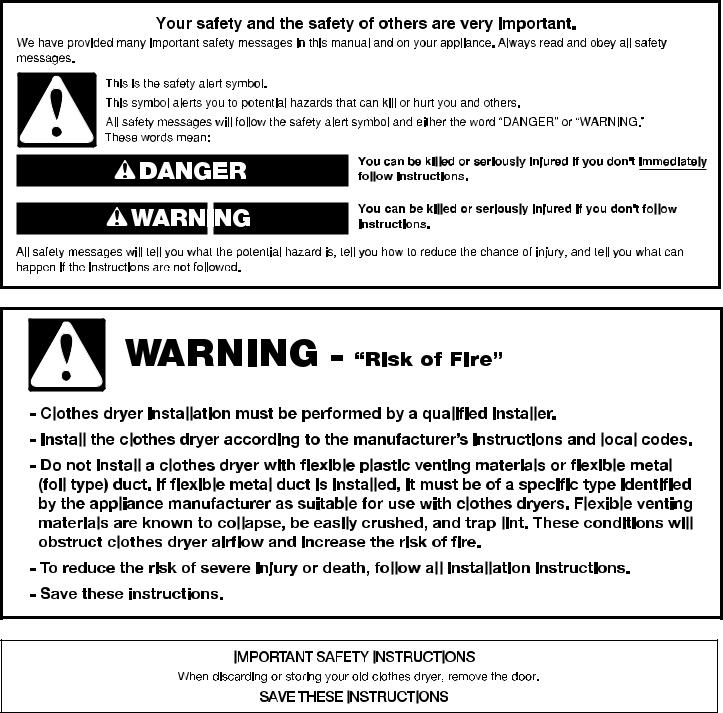
Dryer Safety
2
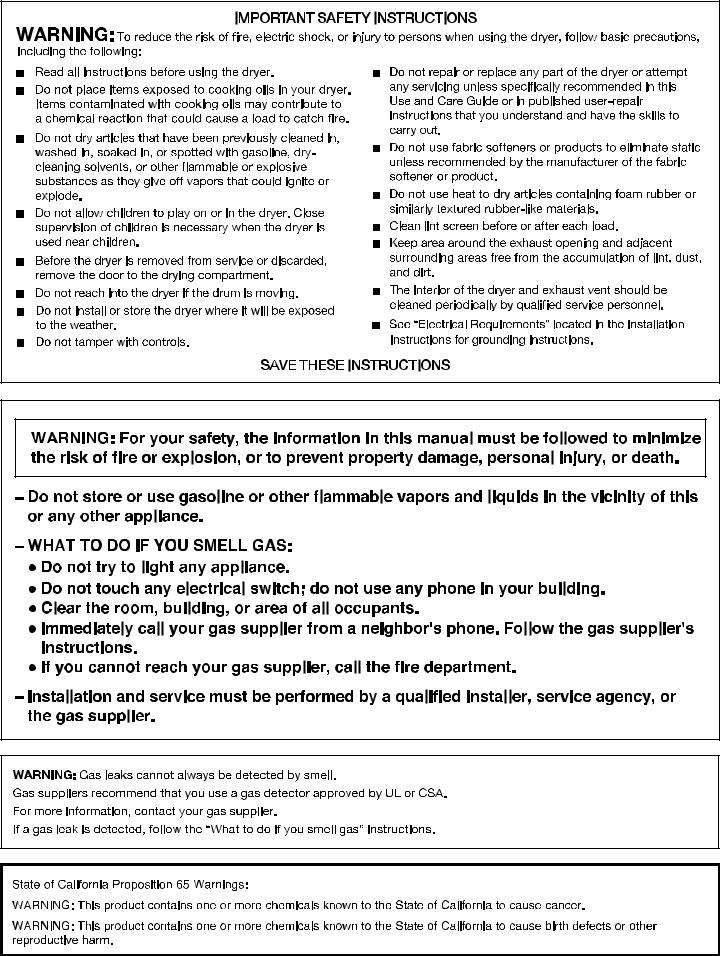
3
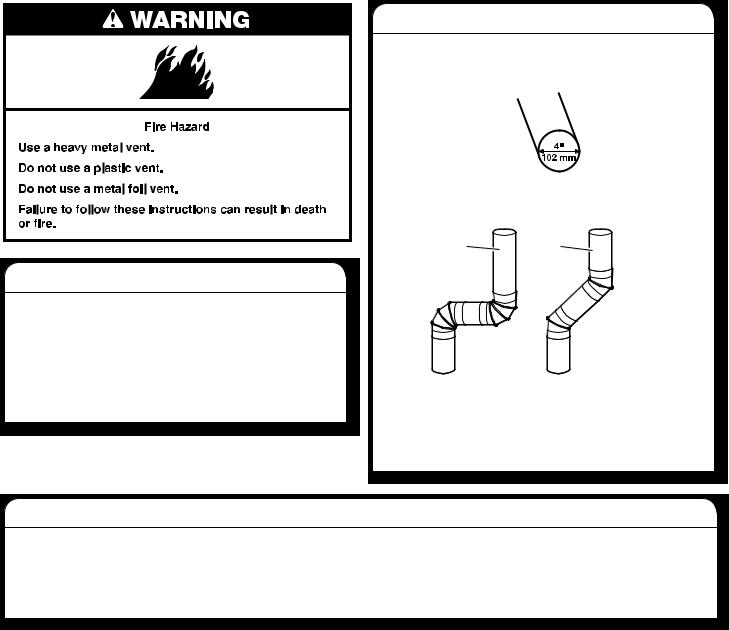
Check Your Vent System for Good Air Flow
Good air flow
Along with heat, dryers require good air flow to efficiently dry laundry. Proper venting will reduce your drying times and improve your energy savings. See “Installation Instructions.”
The venting system attached to the dryer plays a big role in good air flow.
Service calls caused by improper venting are not covered by the warranty and will be paid by the customer, regardless of who installed the dryer.
Maintain good air flow by:
■■ Cleaning your lint screen before each load.
■■ Replace plastic or foil vent material with 4" (102 mm) diameter heavy, rigid vent material.
■■ |
Use the shortest length of vent possible. |
|
■■ |
Use no more than four 90° elbows in a vent system; |
|
|
each bend and curve reduces air flow. |
|
|
Good |
Better |
■■ Remove lint and debris from the exhaust hood.
■■ Remove lint from the entire length of the vent system at least every 2 years. When cleaning is complete, be sure to follow the “Installation Instructions” supplied with your dryer for final product check.
■■ Clear away items from the front of the dryer.
Use Automatic Dry/Sensor Dry cycles for better fabric care and energy savings
Use the Automatic Dry/Sensor Dry cycles to provide the most energy savings and enhanced fabric care from the dryer. During Automatic Dry/Sensor Dry cycles, drying air temperature or moisture level are sensed in the load. This sensing occurs throughout the drying cycle and the dryer shuts off when the load reaches the selected dryness. The Energy Preferred cycle will provide optimal energy savings.
With Timed Dry, the dryer runs the amount of time set and sometimes results in shrinkage, wrinkling, and static due to over-drying. Use Timed Dry for the occasional damp load that needs a little more drying time or when using the drying rack.
4
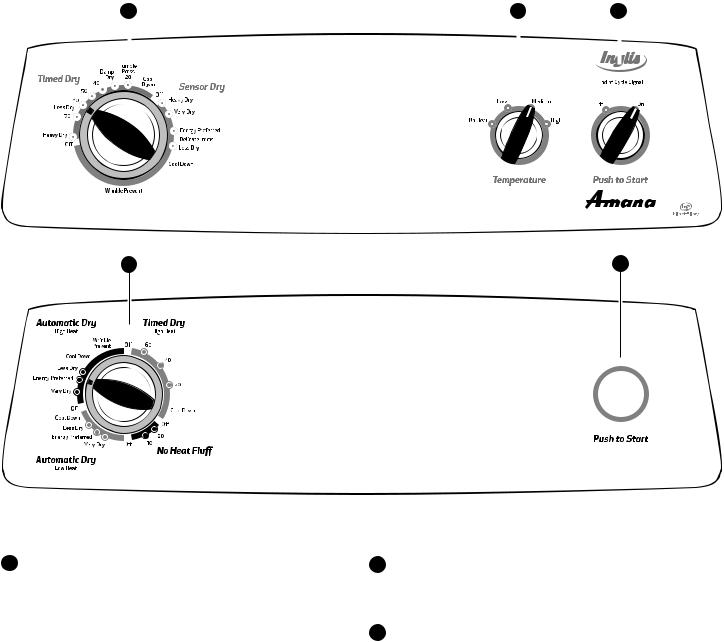
Control Panel & Features
1 |
2 |
|
|
3 |
|
|||
|
|
|
|
|
|
|
|
|
|
|
|
|
|
|
|
|
|
|
|
|
|
|
|
|
|
|
|
|
|
|
|
|
|
|
|
|
|
|
|
|
|
|
|
|
|
|
|
|
|
|
|
|
|
|
|
|
|
|
|
|
|
|
|
|
|
|
|
|
|
|
|
|
|
|
|
|
|
|
|
|
|
|
|
|
|
|
|
|
|
|
|
|
|
|
|
|
|
|
1 |
3 |
Not all features and options are available on all models.
Appearance may vary.
1DRYER CYCLE KNOB
Use your Dryer Cycle Knob to select available cycles on your dryer. Turn the knob to select a cycle for your laundry load. See “Cycle Guide” for detailed descriptions of cycles.
TIMED DRY
Will run the dryer for the specified time on the control. On models with a selectable temperature knob, you may choose a setting based on the fabrics in your load. Drying time and temperature will depend on your dryer model.
AUTOMATIC DRY/SENSOR DRY
Senses moisture in the load or air temperature and shuts off when the load reaches the selected dryness level. Gives the best drying in the shortest time. Drying time will vary based on fabric type, load size, and dryness setting.
2TEMPERATURE
Select a drying temperature based on the fabrics in your load. If you are unsure of the temperature to select for a load, select the lower setting rather than the higher setting.
3PUSH TO START/END OF CYCLE SIGNAL
The End of Cycle Signal produces an audible sound when the drying cycle is finished. Promptly removing clothes at the end of the cycle reduces wrinkling.
Turn the END OF CYCLE SIGNAL knob to select the desired setting (On or Off). Press the PUSH TO START knob to start the dryer.
5
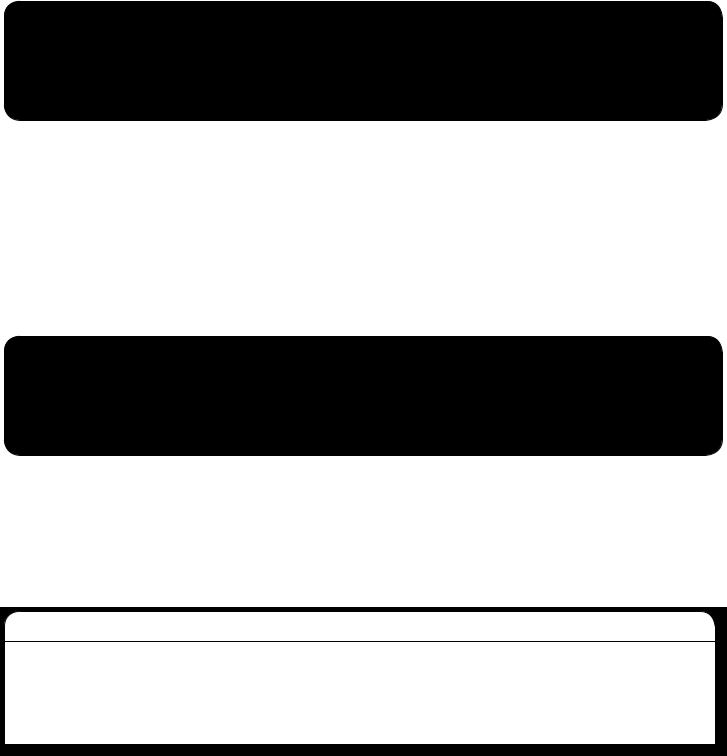
Cycle Guide — Automatic Dry/Sensor Dry Cycles
Not all cycles and settings are available on all models.
Items to dry: |
Dryness Level: |
Temperature: |
Cycle Details: |
|
|
|
|
Jeans, heavy work clothes, |
Heavy Dry/Very Dry |
High |
Automatic Dry/Sensor Dry cycles give the |
towels |
Energy Preferred |
|
best drying in the shortest time. Drying time |
|
Less Dry |
|
varies based on fabric type, load size, and |
|
|
|
dryness setting. |
Work clothes, medium |
Heavy Dry/Very Dry |
Medium |
Select a drying temperature based on the fabrics |
weight fabrics, sheets |
Energy Preferred |
|
in your load. If you are unsure of the temperature |
|
Less Dry |
|
to select for a load, select the lower setting rather |
|
|
than the higher setting. |
|
|
|
|
|
|
|
|
|
Casual, shirts, pants, |
Heavy Dry/Very Dry |
Low |
|
lightweight items, |
Energy Preferred |
|
|
synthetics, delicates, |
Less Dry |
|
|
athletic wear |
|
|
|
|
|
|
|
NOTE: If loads do not seem as dry as you would like, select Heavy Dry/Very Dry next time you dry a similar load. If loads seem drier than you like, select Less Dry next time you dry a similar load.
Cycle Guide — Timed Dry Cycles
Not all cycles and settings are available on all models.
TIMED DRY – Will run the dryer for the specified time on the control.
Items to dry: |
Cycle: |
Temperature: |
Cycle Details: |
|
|
|
|
Large or heavy items such |
Heavy Dry |
Any |
Choose high to dry large or heavy loads. |
as thick towels or robes |
|
|
|
|
|
|
|
Any load |
Damp Dry |
Any |
Dries items to a damp level or for items that do not |
|
|
|
require an entire drying cycle. |
|
|
|
|
Any load |
Tumble Press® |
Any |
Use low to medium temperature to smooth out |
|
|
|
wrinkles, such as those found in clothes packed |
|
|
|
in a suitcase or in items wrinkled from being left |
|
|
|
in the dryer too long. |
|
|
|
|
Rubber, plastic, heat |
No Heat Fluff |
N/A |
No heat drying. |
sensitive fabrics |
(on some models) |
|
|
|
or |
or |
|
|
Any cycle |
No Heat |
|
|
(on some models) |
|
|
|
|
|
|
Setting the Drying Temperature
If your dryer has multiple heat settings:
■■ A High temperature setting may be used for drying heavyweight items such as towels and work clothes.
■■ A Low to Medium temperature setting may be used for drying medium-weight items such as sheets, blouses, dresses, underwear, permanent press fabrics, and some knits.
■■ Use the No Heat temperature setting or No Heat Fluff cycle for foam, rubber, plastic, or heat-sensitive fabrics.
■■ Line dry bonded or laminated fabrics.
NOTE: If you have questions about drying temperatures for various loads, refer to the care label directions.
6
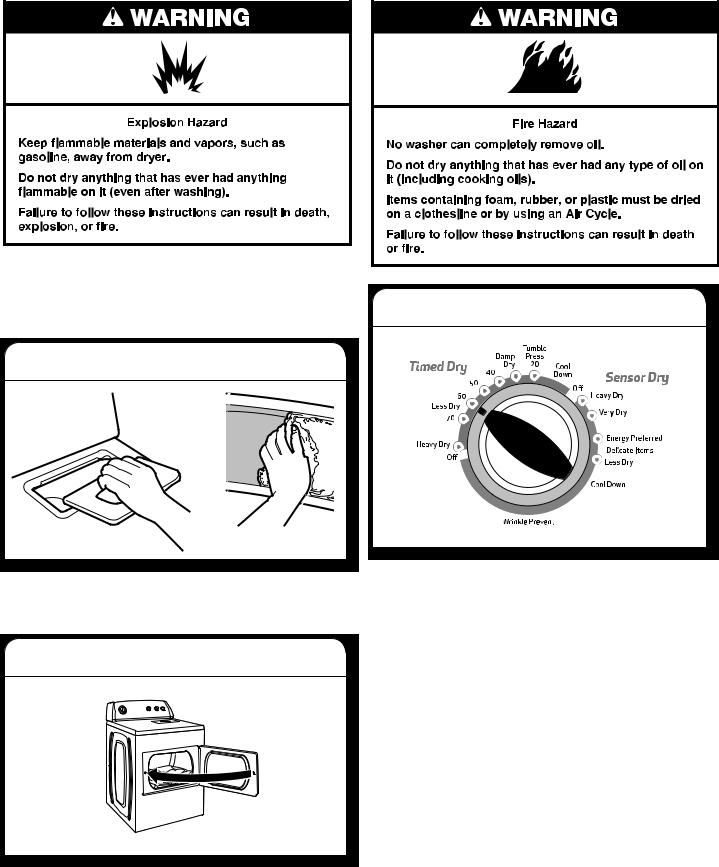
Using Your Dryer
WARNING: To reduce the risk of fire, electric shock, or injury to persons, read the IMPORTANT SAFETY INSTRUCTIONS before operating this dryer.
Before using your dryer, wipe the dryer drum with a damp cloth to remove dust from storing and shipping.
1. Clean the lint screen
Clean the lint screen before each load. Pull the lint screen out of its holder. Roll lint off the screen with your fingers. Do not rinse or wash screen to remove lint. Push the lint screen firmly back into place. For additional cleaning information, see “Dryer Care”.
2. Load the dryer
Place laundry in the dryer. Close the door. Do not tightly pack the dryer; clothes should be able to tumble freely.
NOTE: Your model may have a different door than the one shown. Some models have drop down doors.
3. Select the desired cycle
Select the desired cycle for your load. See the Cycle Guide for more information about each cycle.
AUTOMATIC DRY/SENSOR DRY CYCLES
You can select a different dryness level, depending on your load, by turning the knob to dryness level.
Selecting Very Dry, ENERGY PREFERRED, or Less Dry automatically adjusts the dryness level at which the dryer will shut off. Once a dry level is set, it cannot be changed without stopping the cycle.
AUTOMATIC DRY/SENSOR DRY cycles give the best drying in the shortest time. Drying time varies based on fabric type, load size, and dryness setting.
7
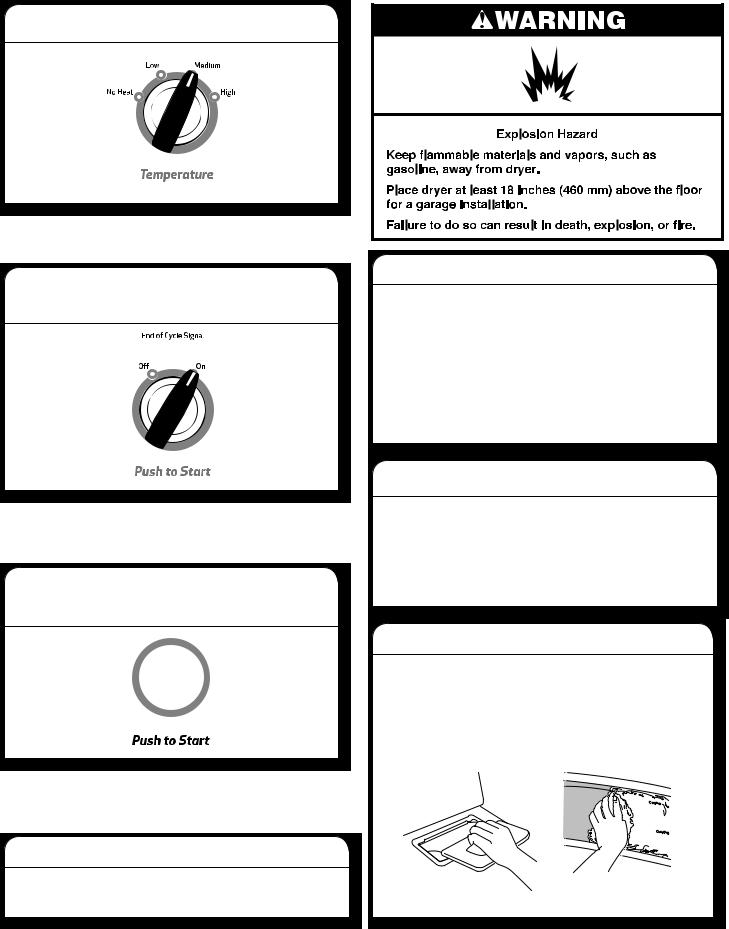
4. Set cycle settings and options
Select cycle settings and options by turning the knob to the desired position.
NOTE: Not all options and settings are available with all cycles.
5. Select End of Cycle Signal
(depending on model)
Turn the END OF CYCLE SIGNAL knob to select the desired setting (On or Off). The End of Cycle Signal produces an audible sound when the drying cycle is finished. Promptly removing clothes at the end of the cycle reduces wrinkling.
6. Press PUSH TO START to begin cycle (appearance may vary)
Push and hold the PUSH TO START knob to begin the cycle.
Dryer Care
CLEANING THE DRYER LOCATION
Keep dryer area clear and free from items that would block the air flow for proper dryer operation. This includes clearing piles of laundry in front of the dryer.
8
CLEANING THE DRYER INTERIOR
To clean dryer drum
1.Apply a liquid, nonflammable household cleaner to the stained area of the drum and rub with a soft cloth until stain is removed.
2.Wipe drum thoroughly with a damp cloth.
3.Tumble a load of clean cloths or towels to dry the drum.
NOTE: Garments that contain loose dyes, such as denim blue jeans or brightly colored cotton items, may discolor the dryer interior. These stains are not harmful to your dryer and will not stain future loads of clothes. Dry these items inside out to avoid drum staining.
REMOVING ACCUMULATED LINT
From inside the dryer cabinet
Lint should be removed every 2 years, or more often, depending on dryer usage. Cleaning should be done by a qualified servicer.
From the exhaust vent
Lint should be removed every 2 years, or more often, depending on dryer usage.
CLEANING THE LINT SCREEN
Every load cleaning
The lint screen is located in the dryer. A screen blocked by lint can increase drying time.
To clean:
1.Pull the lint screen out of its holder. Roll lint off the screen with your fingers. Do not rinse or wash screen to remove lint. Wet lint is hard to remove.
2. Push the lint screen firmly back into place.
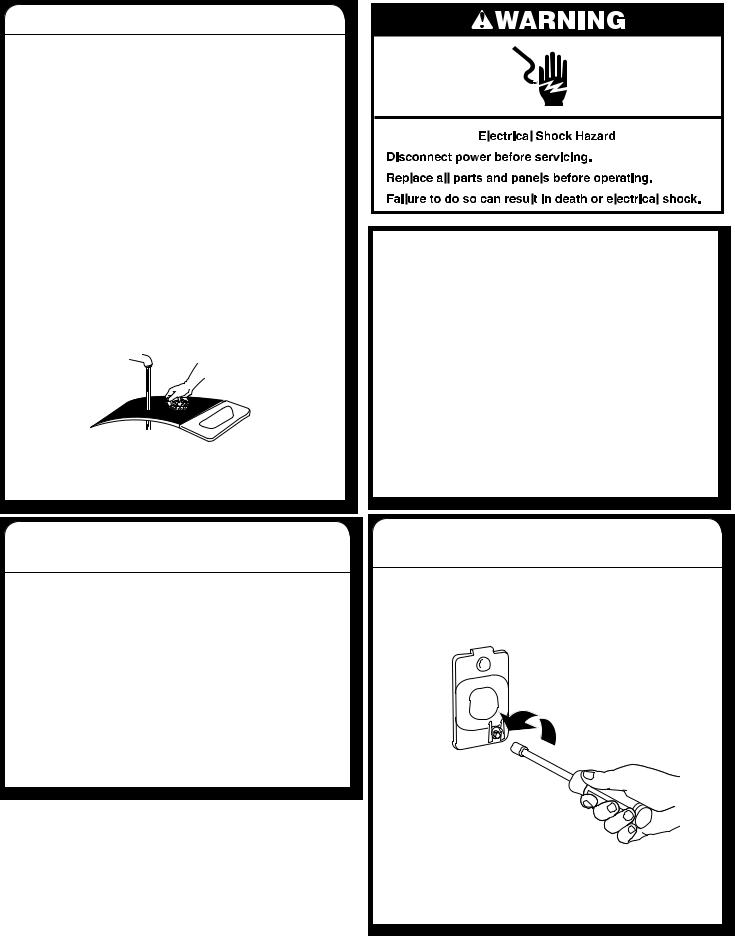
CLEANING THE LINT SCREEN
IMPORTANT:
nDo not run the dryer with the lint screen loose, damaged, blocked, or missing. Doing so can cause overheating and damage to both the dryer and fabrics.
nIf lint falls off the screen into the dryer during removal, check the exhaust hood and remove the lint. See “Venting Requirements.”
As needed cleaning
Laundry detergent and fabric softener residue can build up on the lint screen. This buildup can cause longer drying times for your clothes, or cause the dryer to stop before
your load is completely dry. The screen is probably clogged if lint falls off while the screen is in the dryer.
Clean the lint screen with a nylon brush every 6 months, or more frequently, if it becomes clogged due to a residue buildup.
To wash:
1.Roll lint off the screen with your fingers.
2.Wet both sides of lint screen with hot water.
3.Wet a nylon brush with hot water and liquid detergent. Scrub lint screen with the brush to remove residue buildup.
4.Rinse screen with hot water.
5.Thoroughly dry lint screen with a clean towel. Reinstall screen in dryer.
For direct-wired dryers:
1.Turn off power at fuse or breaker box.
2.Disconnect wiring.
3.Make sure leveling legs are secure in dryer base.
4.Use tape to secure dryer door.
For gas dryers:
1.Unplug or disconnect power to dryer.
2.Close shutoff valve in gas supply line.
3.Disconnect gas supply line pipe and remove fittings attached to dryer pipe.
4.Cap the open fuel supply line.
5.Make sure leveling legs are secure in dryer base.
6.Use tape to secure dryer door.
Reinstalling the Dryer
Follow the “Installation Instructions” to locate, level, and connect the dryer.
VACATION, STORAGE,
AND MOVING CARE
Non-Use or Storage Care
Operate your dryer only when you are at home. If you will be on vacation or not using your dryer for an extended period of time, you should:
1.Unplug dryer or disconnect power.
2.(For gas dryers only): Close shut off valve to gas supply line.
3.Clean lint screen. See “Cleaning the Lint Screen.”
Moving Care
For power supply cord-connected dryers:
1.Unplug the power supply cord.
2.Make sure leveling legs are secure in dryer base.
3.Use tape to secure dryer door.
CHANGING THE DRUM LIGHT
(ON SOME MODELS)
1.Unplug dryer or disconnect power.
2.Open the dryer door. Locate the light bulb cover on the back wall of the dryer. Using a 1/4" nut driver or socket wrench, remove the screw located in the lower right-hand corner of the cover. Remove the cover.
3.Turn bulb counterclockwise. Replace the bulb with
a 10-watt appliance bulb only. Replace the cover and secure with the screw.
4.Plug into a grounded outlet or reconnect power.
9
